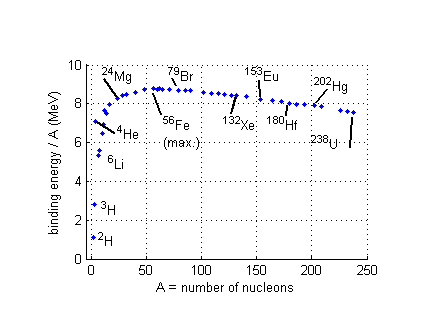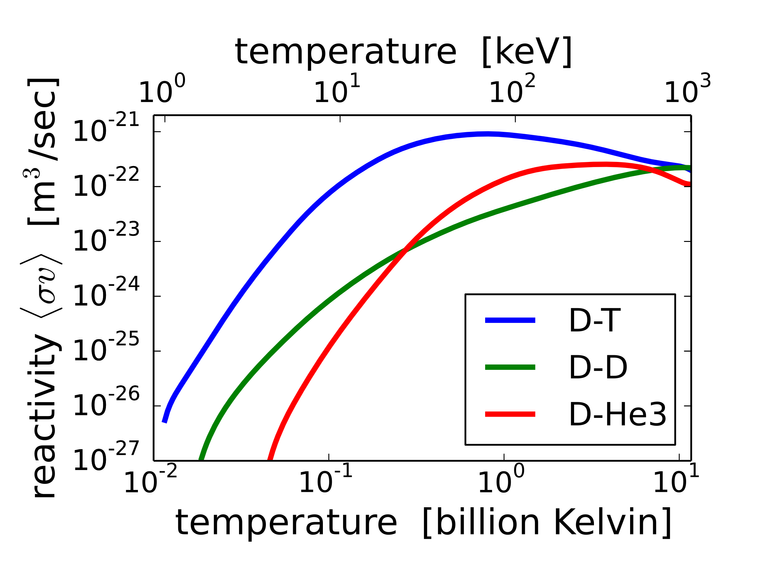Now I will take a step backwards in respect to my first and the second NF article and explain you WHAT is nuclear fusion.
Reading my previous two articles you could think “OK, you convinced me, nuclear fusion is cool. But what it is?” So I will try to answer you, assuming that you were too lazy to google it.
Words “fusion” and “nuclear”
Taken from Latin “fusio”, fusion means to join, merge or synthesize. While “nucleus” also comes from Latin meaning center, core or kernel and for the physicist it is center of an atom. Henceforth, “nuclear fusion” is simply joining of at least two atom nuclei and creating at least one new nucleus.
Note here that nuclear fusion is just a type of nuclear reaction, as there could be an interaction between nucleus and particle (e.g. photon, electron, neutron) that are creating new nuclei. Such reaction is indeed nuclear, but it is not fusion as there were no multiple nuclei to merge.
“Magical” physics = Energy from nowhere
OK, so two atomic nuclei fuse/join, but how can this bring us unlimited energy source?
The key lies in joining or binding energy between protons and neutrons in the nucleus. The higher binding energy the better nucleus' stability. And we all know that nature tends towards higher stability.

* 1 MeV is about 11 billion Celsius degrees (note: temperature of the Sun is 15 million degrees Celsius!)
Image Source
Now let's look at the graph above. We can see that the largest binding energy per nucleon (i.e proton or neutron) is largest around iron (marked Fe). Henceforth, we could say that all atoms in the Universe want to be iron. Or we could call iron a “celebrity” of the elements.
Back to the physics. From the graph, we also see that stability is almost constantly increasing from hydrogen (marked H) towards iron. This means that we need to fuse two smaller nuclei into a larger one with respect to get some energy out of the reaction.
Star fight
However, there is a trouble - nuclei are positively charged and you probably know that they should repel each other due to the electrostatic forces. Luckily the barrier can be passed if the nuclei are close enough because then strong nuclear forces are stronger than the electrostatic ones. But nuclei need to have a vast amount of speed, i.e. energy, for overcoming the electrostatic barrier. That is why in practice nuclear fusion happens only in stars. But for natural fusion to go up to the iron, star needs to be very large.
So, in theory, the nuclear fusion appears spontaneously up to the iron due to the binding energy maximum. Elements beyond the iron are created in the supernova of the gigantic stars. Adding 1 and 1, you now see that all natural material known to us comes from the stars. That is why Sagan said that “we are all stardust”.
Feasible “magic”
But what kind of nuclear fusion is feasible for humans? The graph below gives a nice summary:

Image Source
It gives the probability for certain fusion reaction to happen depending on the temperature. We tend to have the highest probability and the lowest temperature, as this would give us the most efficient process.
One more criterion to look at is how much energy could we get from the reaction:

Cross-section in area units is the way for the nuclear physicist to express the probability ;)
Obviously, the best option is deuterium-tritium or D-T reaction, as it gives the highest output for lowest input. That is why this reaction is in the center of attention for the whole scientific community. Deuterium is abundant as the source from the sea water, but tritium is practically non-existent on the Earth as it is radioactive (I explained it in the previous text).
One solution is to make tritium by ourselves. This could be done by bombarding lithium by neutron created in D-T reaction. This is already being done for 20 years, but the technology is still in the experimental phase.
Other solutions are to look at the different reactions, such as deuterium-deuterium. This would be great from the fuel perspective but the temperatures are too high and probability too low for the present technologies. The second popular alternative is deuterium-helium-3, the latter one being deployed on the Moon. This is why you could see in the newspapers that “Moon mining could solve energy problems”. But going to the Moon, settling and mining it are stories for itself . . .
Note that there are more possible reactions, but they will probably be not feasible in this century. On the other hand, I do not care which reaction will win. What matters is that we get clean, safe, base-load and abundant energy source.
I hope I did not overwhelm you with the terms from nuclear physics. If so, please feel free to ask anything in the comments. I will either try to answer you in the comment or even make the new post. If the topic shows popular I will delegate some power to you - I guess that would be fair ;)